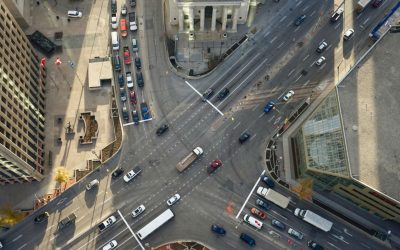The statistics are out. Saskatchewan is buying more, selling more and building more than any other province. The good times are rolling.
Provincial spending was also up 10 per cent in the last budget, and this is not the first time the government of Saskatchewan has met a booming economy halfway in terms of opulence.
Fortunately, many of our politicians know where that pattern of budget increases can lead, and they appreciate the value of some form of rules-based framework, that is, a fiscal constitution, to discourage unnecessary increases in public spending.
Every year since 1997 government expenditures in Saskatchewan has increased by a trend average of $307 for every man, women and child in the province, even allowing for inflation. This works out to $3,070 per capita more today in inflation-adjusted dollars than in 1997.
Have our social outcomes kept pace during this same period with this increased spending? Let’s take a look.
Life expectancy increased an average of 3.8 weeks per year, compared to a Canadian trend average of 14.4 weeks per year the last century. Infant mortality rates improved marginally. Educational achievements declined: Saskatchewan’s 2000-2006 scores, based on the OECD’s international comparisons of school performance, actually decreased in reading, mathematics and science. Suicide statistics have improved, but crime rates have increased. Government expenditure did not demonstrably improve Gini coefficients, the standard measure of income equality.
Altogether, there does seem to be a definite disconnect between the amount of extra spending ($3,070 per person) by the Saskatchewan government between 1997 and 2007 and the benefits enjoyed by its citizens.
To test the effectiveness of this extra spending, just imagine what a difference a person could make if he was allowed to make his own life choices? $3,070 is equivalent to sponsoring five children through World Vision, buying an around the world air ticket, or buying a reliable used car – each year.
In the 1970s, Saskatchewan prospered thanks to a commodities and farm boom. Unfortunately, deficits followed in the eighties and nineties, as revenue fell and spending continued to rise. Tough leadership by the Romanow government, best embodied within Saskatchewan’s 1995 Balanced Budget Act, ended the culture of deficits.
Today, however, and in the midst of another commodities boom, government expenditures are again increasing far beyond the reasonable standard of inflation plus population growth. How might this situation be improved?
We need to ask that question, especially in light of the 2007 Speech from the Throne. Its common theme is a promise to spend more. Of 32 statements that make specific promises, 14 are policy initiatives and 18 are promises to put more money into existing programs. Expenditure promises have become a proxy for governing.
Rising spending is the result of a well-studied political phenomenon known as “concentrated benefits and dispersed costs.” As an example of concentrated benefits, imagine there is a group of 1,000 people who stand to benefit by $1,000 each from increased spending. Each donates $50 to a $50,000 lobbying campaign to ensure the spending goes ahead: a great investment for the group. As an example of dispersed costs, the $1-million spending increase (1,000 x $1,000) is dispersed over half a million Saskatchewan taxpayers, which averages out to $2 each. Unorganized taxpayer will not rationally bother to fight over such a small amount; hence, the organized lobby comes out ahead. Spending wins every time. Multiply this dynamic over hundreds of lobby and special interest groups, particularly in the public sector, and much of the spending momentum in modern-day government is explained.
To counter this expenditure pressure, politicians would do well to place circuit breakers into the budget system. Building on the rules in the present Balanced Budget Act, policy-makers should introduce a Fiscal Constitution for Saskatchewan, which locks per capita government expenditure increases to the rate of inflation plus economic growth. To control the concentrated benefit and dispersed costs dynamic, increases beyond this reasonable standard would require public consent by referendum. Any taxes collected beyond the inflation-proofed rate would be returned to the people who paid them.
The onus of proof would be placed upon those who want more spending. They would have to convince a majority of people that such expenditure would deliver results. This is quite different from the current situation where increased spending becomes the default position.
The new political dynamic would be a boon for the quality of spending. With the level of spending fixed, the political emphasis would shift from “how much?” to “how?” Interest groups would have to persuade the public that they would spend smarter before they could credibly ask for a raise. Meanwhile, any money not meeting this test would be released to circulate and recirculate in the broader economy.
Contrary to common wisdom, the strength of Canada is not oil, minerals or fertile fields. Venezuela and Zimbabwe have those things, too. Canada is one of the best places in the world to live because it has a sophisticated political culture that started evolving with the Magna Carta and continues to evolve today. Smart governance and proper incentives matter more than natural resources; this is why Japan and Hong Kong are more prosperous than Zimbabwe and Venezuela. Improving the quality of government spending with a fiscal constitution would be a useful new chapter in that evolution.


